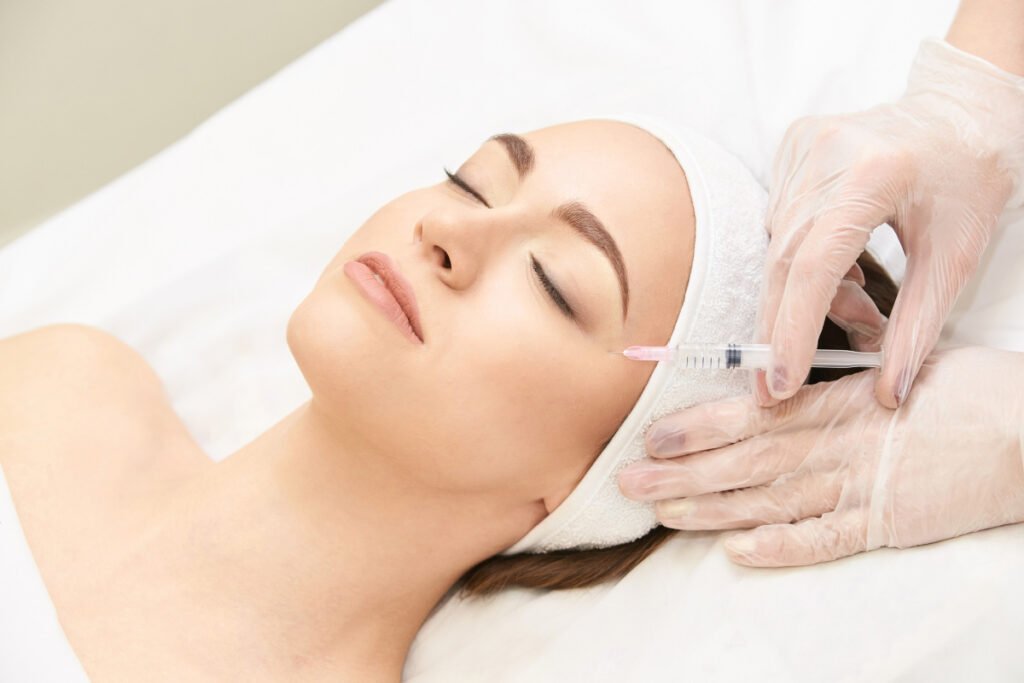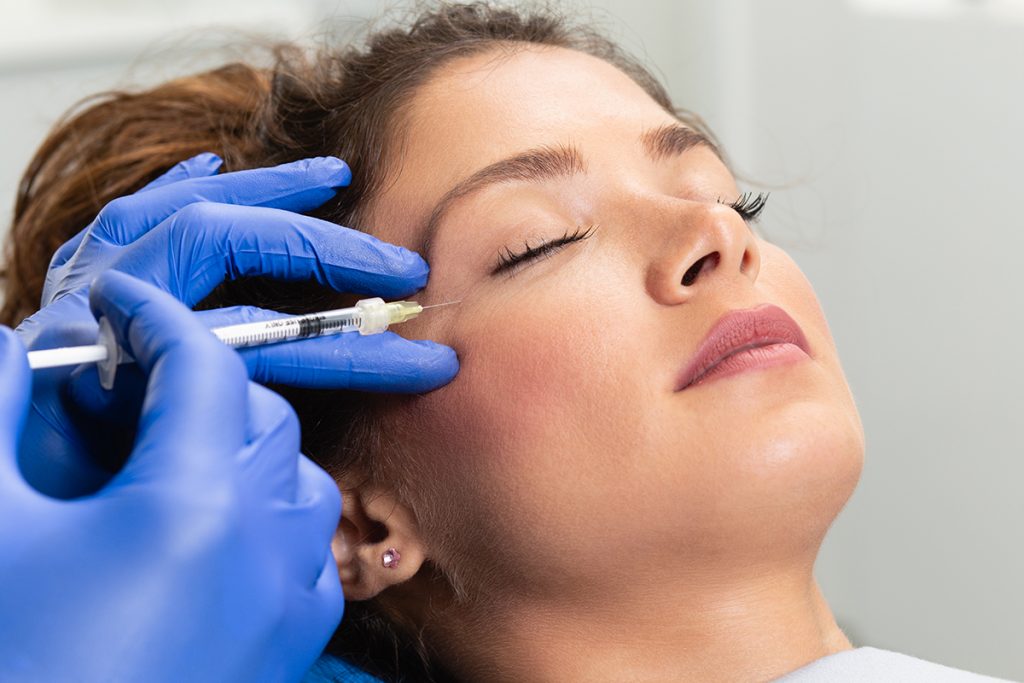Our Injector Team Answers Your Top Questions About Botox & Fillers
Posted on February 2, 2024 | by Boston Plastic SurgeryInjectable treatments—Botox and fillers—have long been among our most popular treatments at Boston Plastic Surgery. It’s no wonder, considering injectables can quickly rejuvenate your appearance without surgery and usually without downtime, too!
We love that many of our patients have chosen us for their very first injectable experience. As such, we’re pretty tuned into the questions that new patients have about injectables. We thought it might be helpful for those of you considering Botox or injectable fillers in Boston to answer some of these now, so we sat down with our two expert injectors for a little Q&A session. Our injector team is made up of our certified nurse practitioner Rachel Cohen, NP-C, and our certified physician’s assistant, Aliza Holstein PA-C. Patients love them especially because they trust them to achieve the results they want time and time again!
How much does Botox cost?
The cost of Botox injections in Boston and elsewhere varies depending on the practice, the patient, and the area of treatment. At Boston Plastic Surgery, Botox is priced at $15 per unit, with a unit being a product-specific measurement. We feel this is the most fair pricing method (versus per area) as every patient needs a slightly different amount of Botox to meet their goals.
Unusually cheap Botox price is a red flag. It may be fake Botox—or it could mean the provider is over-diluting the product to cut costs.
For example, a man with thicker skin and stronger facial musculature may need 28 units or more to adequately smooth deep frown lines, while a younger woman with mild to moderate frown lines may only need 16 units to achieve the desired effect in the same area. By pricing Botox per unit, each of these patients is only paying for the actual product they are receiving.
A word of caution: if you see a Botox price that seems unusually cheap, run—don’t walk—away, especially if the offer is coming from a non-physician practice. This is a red flag for fake Botox, which can have dangerous consequences—or it could mean the provider is diluting the product heavily to cut costs, which will render your treatment ineffective. Prices don’t vary much among trusted providers because Allergan, the manufacturer of Botox, has a set base price for the product and qualified providers require compensation for their time.
How long will it take for me to see Botox results?
Results are usually noticeable about 3 to 7 days after treatment, with full results in place within 2 weeks. If you feel like your Botox injections aren’t providing the improvements you want after two weeks, contact your provider. It’s common for experienced providers to be conservative, especially with a new patient, to avoid overtreatment, which can result in the dreaded “frozen face” look. Usually, a small touch-up injection is all that is needed to boost the effects. The good news is that if you’ve paid by the unit, you know the provider has no incentive to skimp on your treatment, and you’ll have paid a fair price even if you need to touch up with a bit more.
Is Botox safe?
Botox has an excellent safety record. Over 1.5 million neurotoxin (Botox, Dysport & Xeomin) treatments are performed annually in the U.S., and serious side effects are exceedingly rare. The active ingredient in these products, botulinum toxin Type A is made and tested using extremely stringent methods to ensure safe dosage for patients.
It’s extremely important to choose a qualified, experienced Botox provider. Authentic Botox is only available through a licensed physician, so always verify your provider’s credentials to ensure your safety. Choose a plastic surgeon, or a highly experienced aesthetic registered nurse working under MD supervision. You’ll want their thorough knowledge of facial anatomy and deep understanding of how Botox affects the muscles.
Authentic Botox is only available through a licensed physician, so always verify your provider’s credentials to ensure your safety.
Where can injectable fillers be used?
In general, fillers are used to add or replace volume to features, typically in the face or hands. More specifically, replacing volume with fillers can help improve a number of common age-related concerns. For example, we can use fillers to enhance the following areas:
- Lower face: smooth creases around the nose, mouth, and jawline (nasolabial folds, marionette lines, etc.)
- Lips: smooth vertical lines, enhance volume, improve symmetry
- Cheeks: restore a fuller, more youthful appearance
- Under the eyes: smooth depressed tear troughs
- Temples: restore fullness to soften features
- Hands: minimize veins and tendons
What are injectable fillers made of?
This depends on the product. All of the fillers from Juvéderm and Restylane are made from hyaluronic acid (HA), which is a carbohydrate that naturally exists in your body and helps keep skin healthy and elastic. Different HA fillers (i.e., Voluma, Restylane Lyft, Restylane Silk, etc.) are formulated with different particle sizes and structures to achieve a specific gel consistency. Thicker fillers work great for volumizing larger areas, such as the cheeks, while thinner fillers are designed for filling finer lines. One potential plus of HA fillers is that the effects are reversible using injections of an enzyme called hyaluronidase.
Did you know? The effects of fillers tend to wear off more quickly in areas that move frequently, such as the lips.
Another popular injectable, Sculptra Aesthetic, is made from poly-L-lactic acid (PLLA), a synthetic molecule that not only restores volume in the skin but also stimulates collagen production. This helps Sculptra last considerably longer than HA fillers—about 2 to 3 years compared to 6 to 18 months—however, the effects are not reversible by anything except time.
How long do fillers last?
This depends on the product, the area of injection, and the patient. Juvéderm and Restylane products can last anywhere from 6 months to 2 years. The effects of fillers tend to wear off more quickly in areas that move frequently, such as the lips. Also everyone metabolizes fillers at a slightly different rate, so some people will notice the effects last longer while others will need follow-up treatments more frequently to maintain the results.
Ask us more questions at a personal consultationWe hope our injectors have answered some of your top questions about injectables, but if you have more, we’d love to hear from you! At a personal consultation with Rachel, Aliza, or with our practice director Boston plastic surgeon Dr. Fouad Samaha, you will have time to ask questions and discuss your treatment options, whether you are considering injectables or another procedure. Call 617-786-7600 or contact us to request your appointment.


